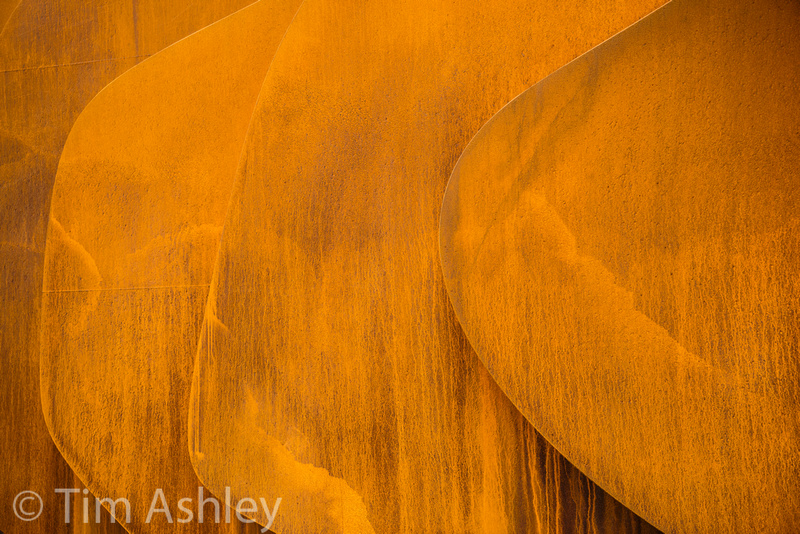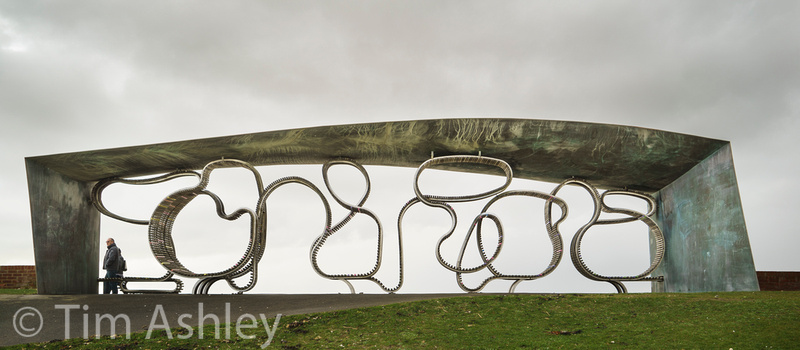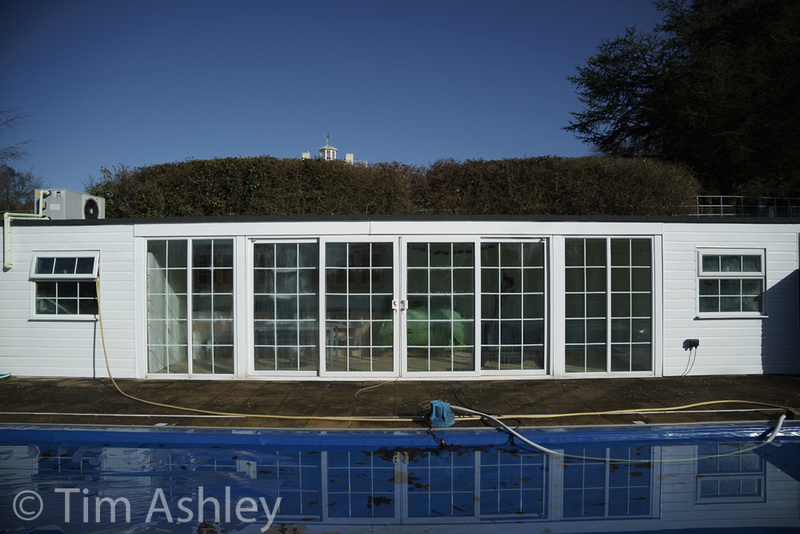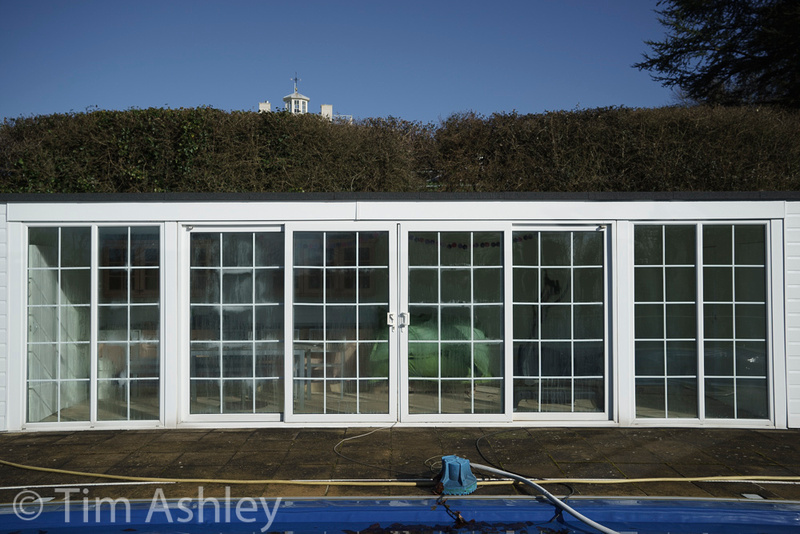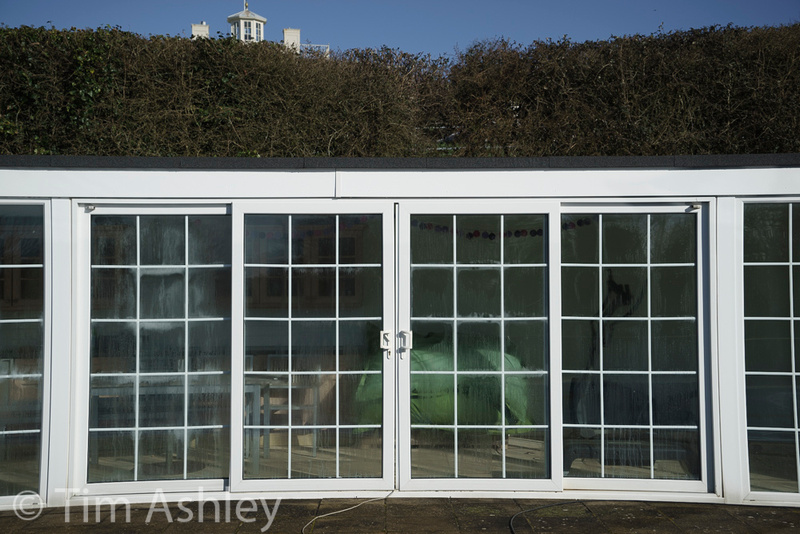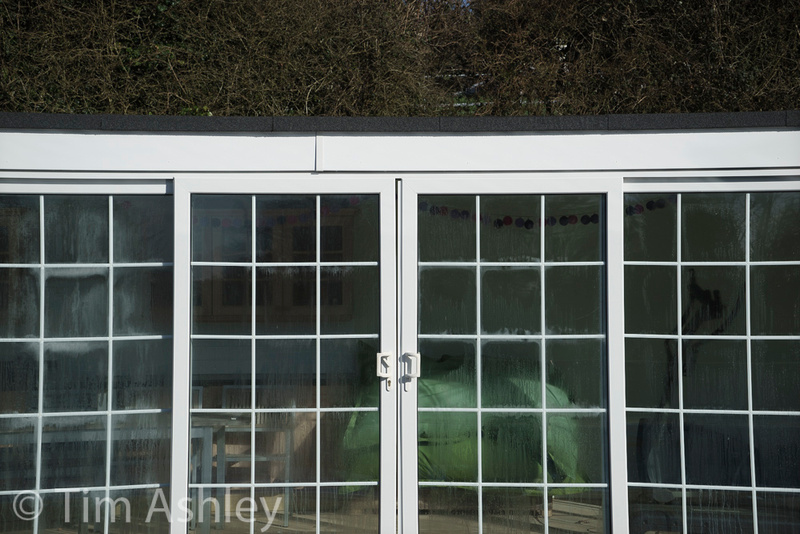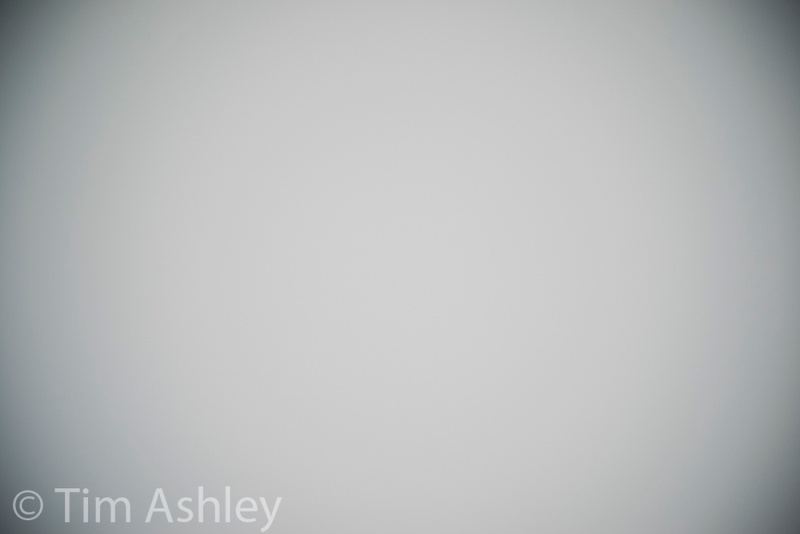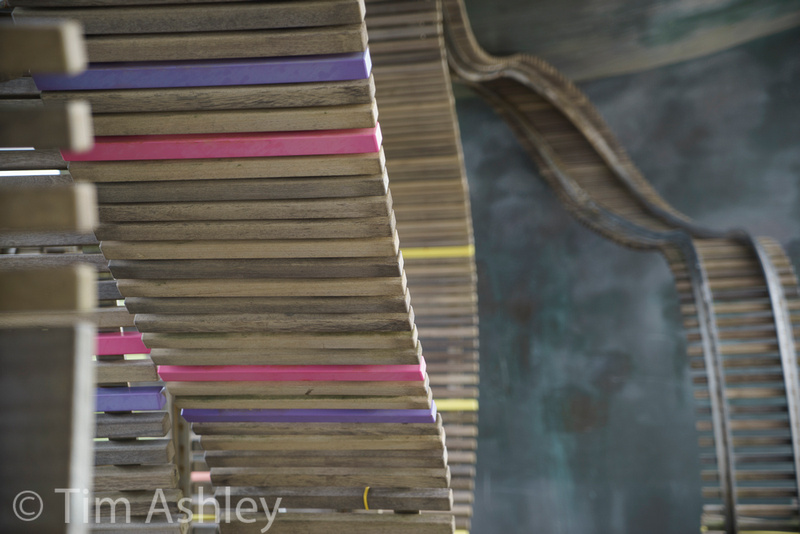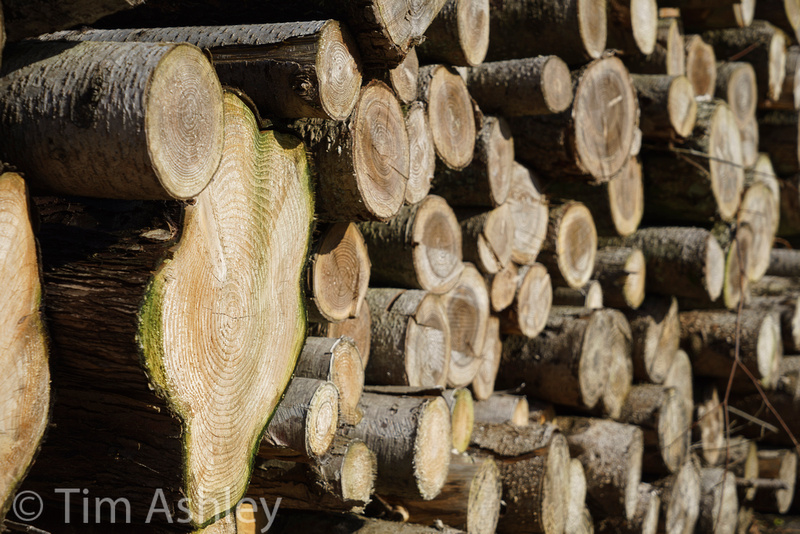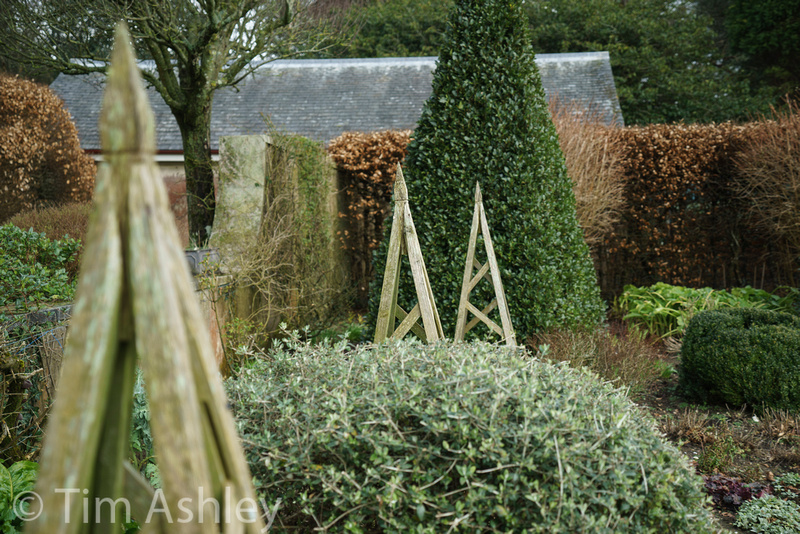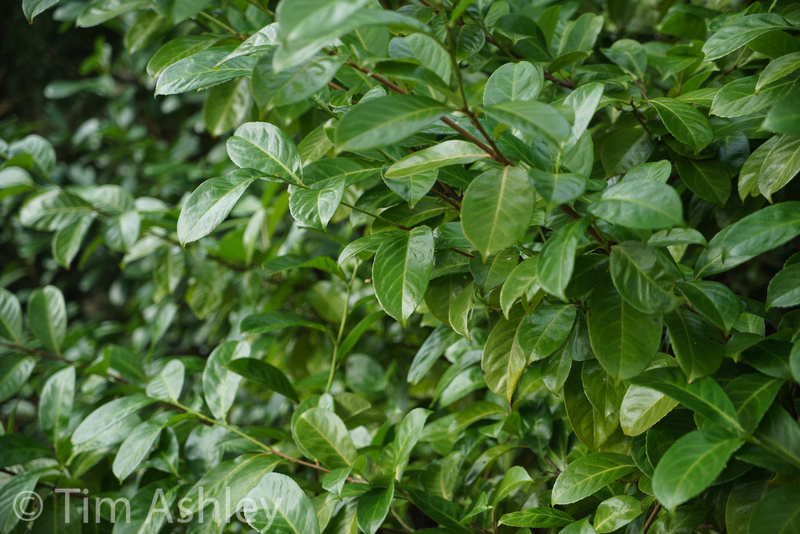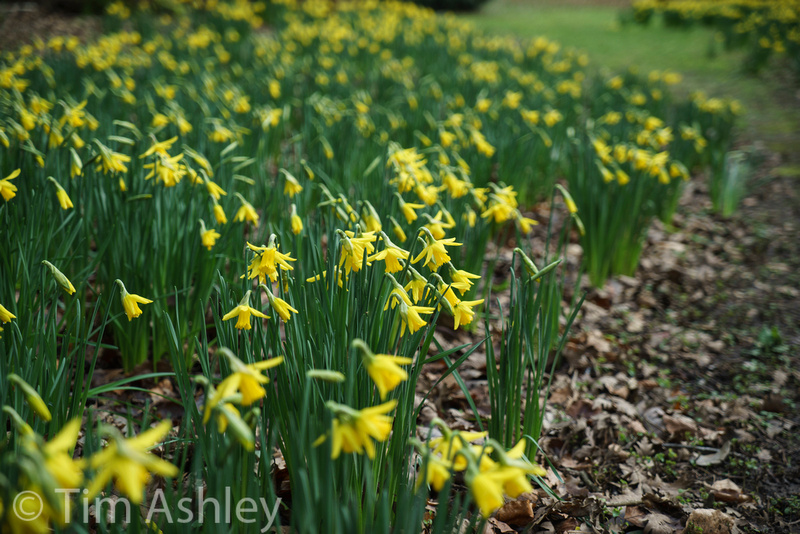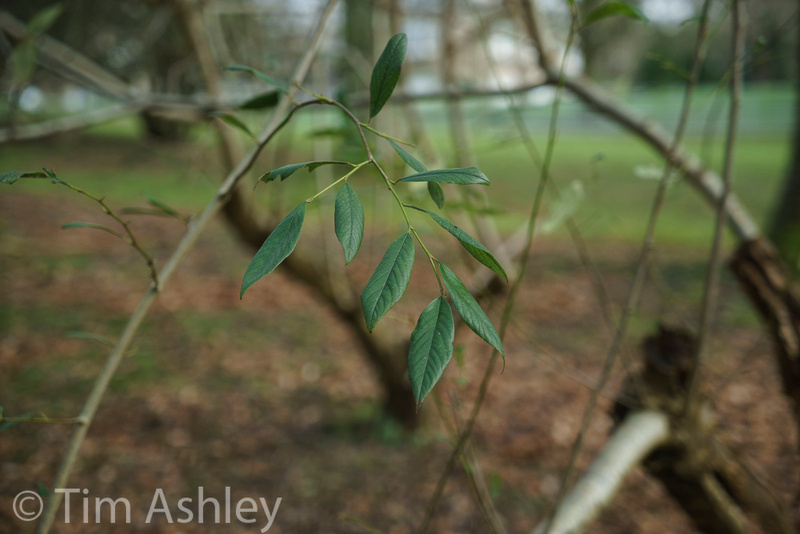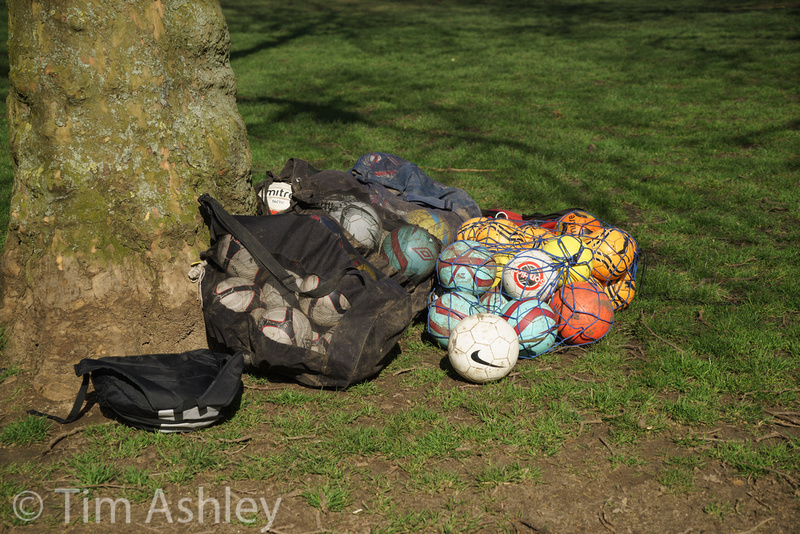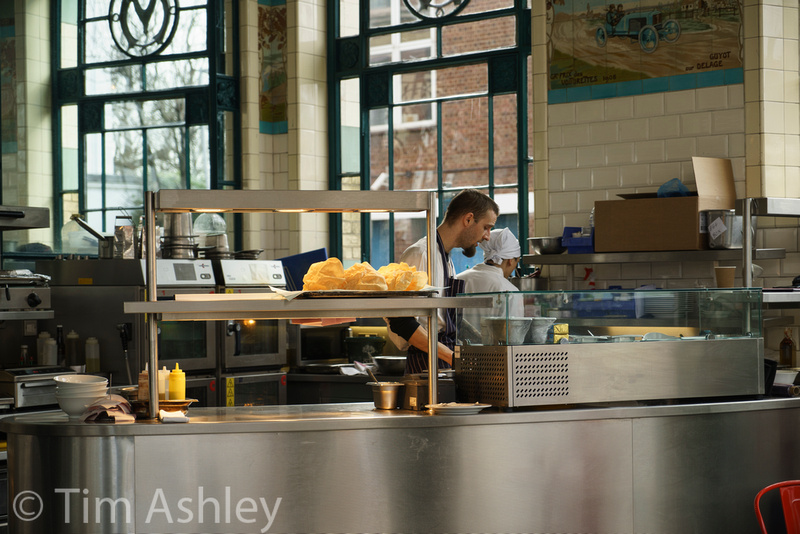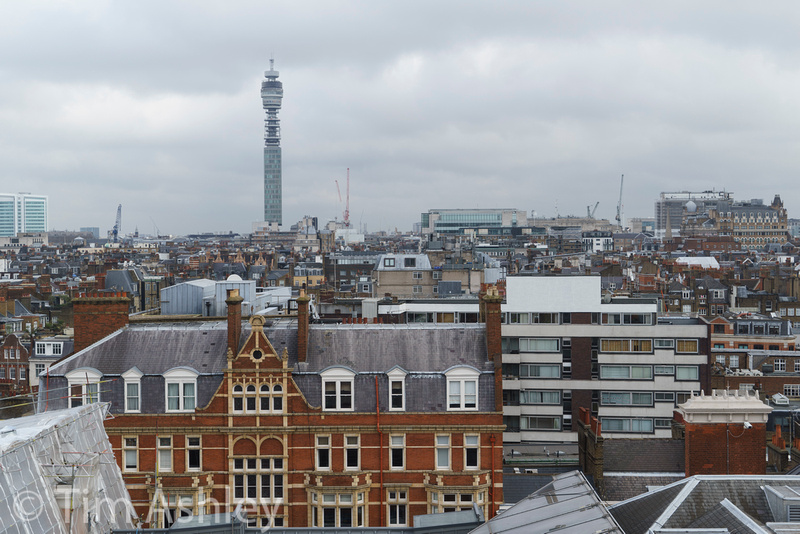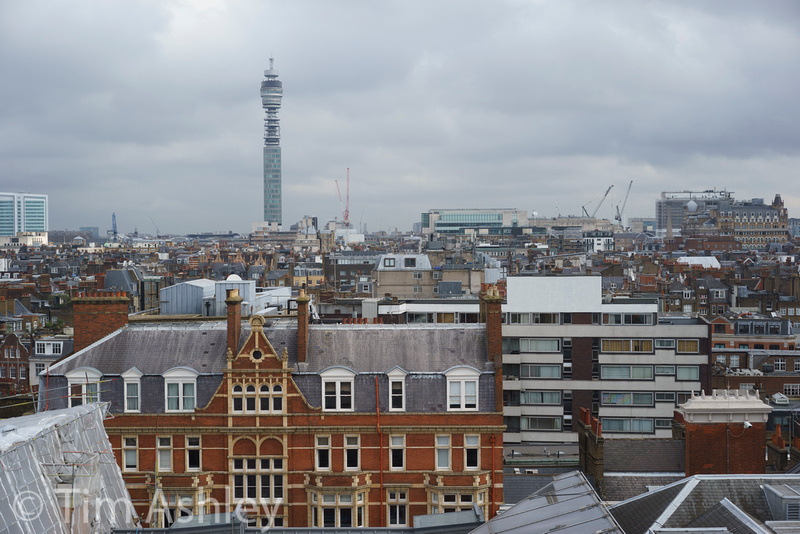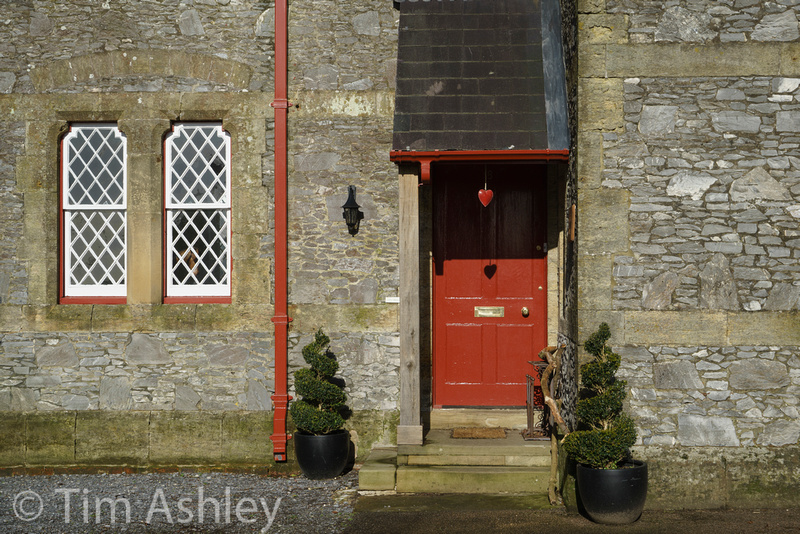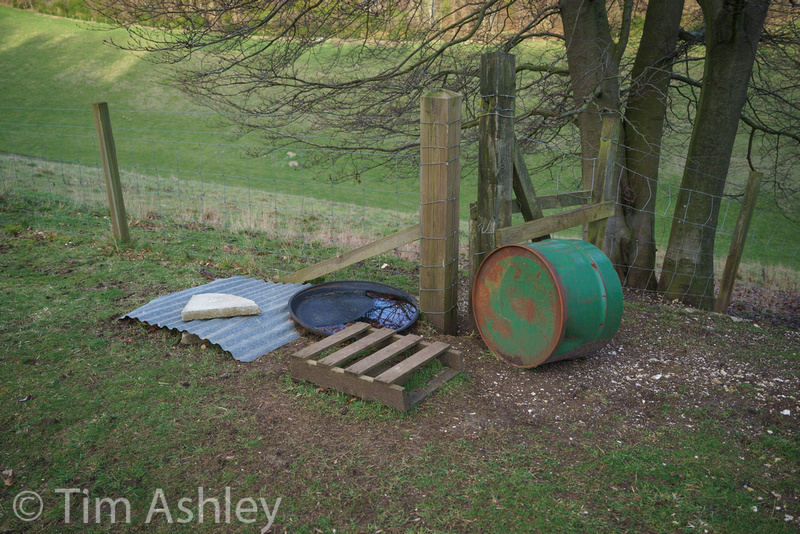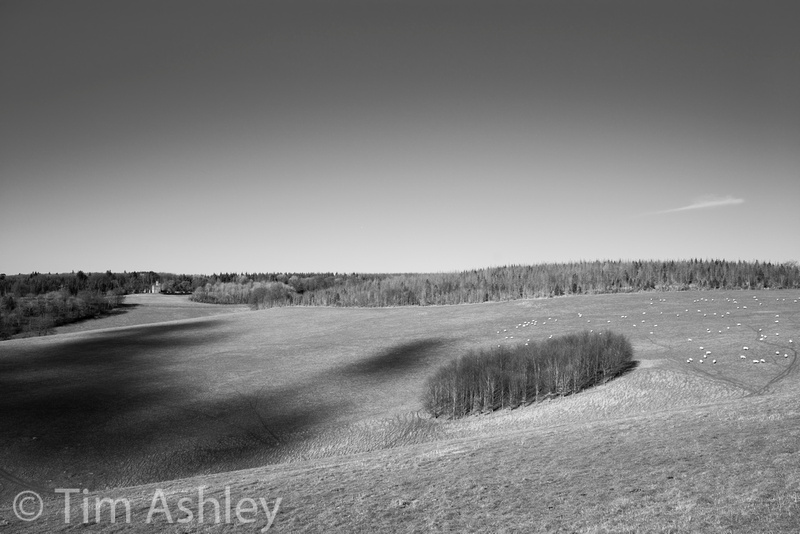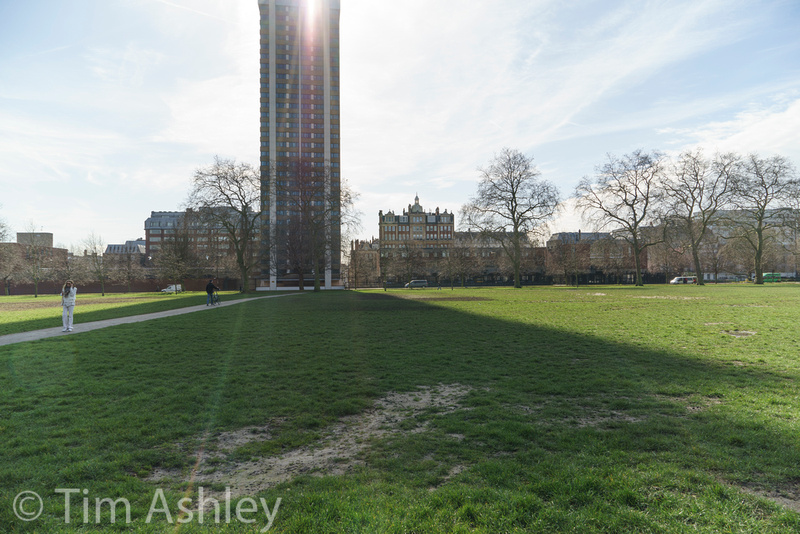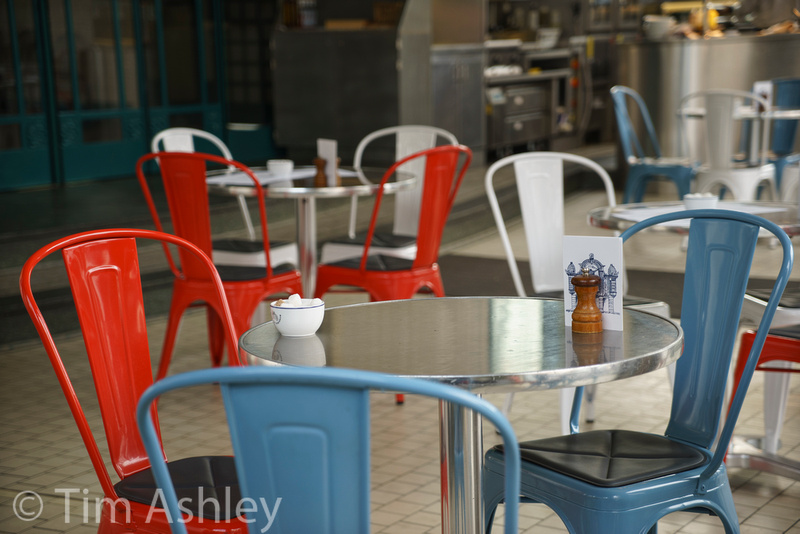The Sony Zeiss Vario-Tessar T* FE 24-70mm F4 ZA OSS: Hallelujah!Expect the unexpected. If you do that, you'll love this lens: for, like the 35mm F2.8 I recently reviewed, it is a complex beast from which to extract the absolute optimum result. Such complexity relates to the trend for lens designers to work very closely with camera manufacturers to 'share the load' of overall image quality between the optics and the way in which their output is processed. Aberrations, distortion, even diffraction and peripheral sharpness are, these days, all 'fair game' for a little helping hand from the signal processing part of the imaging chain. This is made all the more necessary when one considers the design and marketing constraints: for example, a 24-70 Zeiss lens for Sony's new FE range had to be not only a strong performer, but also small, light and correctly priced. Oh, and it has to 'do' video, too - though I will not be commenting on that aspect of its performance. All this has to be achieved in the context of the fact that a lot of people (me included) simply will not commit to a system unless there's a good mid range zoom. And Sony is building a system here. In order to get the entire quart into the requisite pint pot, a lot of smart stuff has to go into the design - not just of the lens itself, but of the entire system for which it is designed. An example: this lens has almost epic levels of distortion. So much so, that for JPEG shooting you cannot even turn distortion correction 'Off' - the option is not available in the menu system at all. A low-distortion design such as the 55mm F1.8 triggers the camera to allow the user the choice of 'Off' for distortion but Sony plainly don't want to frighten the less experienced shooter with what would happen should they be allowed to select this option for their flagship mid-range FE zoom. The short version is, this is a great lens, probably overall the best mid-range zoom I've used and certainly the single most useful lens I own. And Yes, it does let you get great results from the 36mp, AA-free sensor of the magnificent A7R. But the long version is - complicated. There's a lot to cover. So for those who want to read about the complications in their quest to extract the last drop of performance, read on. For those who want to skip to the fun part, just buy one* and enjoy it: it really is great. Let's look at the less good stuff first: distortion, color shading, nervy bokeh, astigmatism, field curvature, focus shift, sample variation and the odd and inconsistent behaviours that can occur when you combine these characteristics: Distortion. Wow. Here are frames shot at each major focal length (24, 35, 50, 70mm) and developed in LR from RAW (the camera does not apply the corrections to the RAW files).
Like I said, the distortion is close to epic. But the good news is twofold: for an awful lot of shots it simply doesn't matter - the distortion gets lost in the shape of the subject. And should you need to correct it, there's a profile in ACR's current release candidate that does a good job, though I prefer to correct distortion only, leaving some vignetting in place. Furthermore, though there is always a small hit to detail and micro contrast when lens corrections do their 'push and pull' thing on a file, there is plenty of detail to go around and the post-corrected results are still pretty damned good provided you shot optimally to start with. Tip #1: if you're shooting a landscape or similar and the image has a strong horizontal line in it, composing (if it suits the subject) with the line close to the mid-height of the frame will mean you probably won't need to correct. Tip# 2: if the you have the camera set to Live View Display: Setting Effect On (Cog symbol:2:item 5) you won't see the distortion in the finder and you will capture a slightly wider FOV than the finder displays, such that a RAW file corrected in post will have about the same FOV as the finder showed. So you have a little wiggle room built in - and I think, but cannot prove, that the camera is always shooting slightly wider than the focal length you have selected, such that a corrected file has a FOV appropriate to the selected focal length. Color Shading and vignetting Don't forget that the in-camera, menu-selectable lens shading corrections only correct for vignetting and NOT for color shifts. So, though shading corrections ARE applied to RAW files if ON in the menu, they help only with luminance issues and not color shifts. This is a pity because there are some color shifts. They effectively become 'not a problem' from about 35mm F5.6 or 8 but at wider focal lengths and all apertures, they might cause problems with some scenes, though luckily, because you will always have accurate EXIF information, you can always shoot a Lens Cast Reference Frame later, and use it with Adobe's Flat Field Plugin to get rid of the issue. Here follows an example of an uncorrected file at 24mm and F4 and if you click here you can see files at all major focal lengths and apertures: Tip #3: shoot with lens shading corrections OFF and deal with both colour and luminance shading later if needed. And buy a Universal Lens Calibrator Sheet for peanuts, it will save your rear end one day Nervy Bokeh You're never going to get gorgeous bokeh from a mid-range zoom, especially one that is trying to do as much as this one. And in truth, the bokeh isn't actively bad: in fact sometimes it's just dandy - and for this class of lens, it's very reasonable. But I sometimes find it a little jarring. Here is a series of examples with fore and aft bokeh and different types of subject. It is worst with aft OFF subjects that have sharp lines. That last one shows the danger zone: it can get close to ugly with too many OOF lines in the background - but 'softer' subjects mask the effect enough, most of the time. In any event, this, for my use at least, isn't meant to be a lens used for extensive OOF work. If I want that, I'll choose the appropriate prime. These are the three most obvious problem areas. But there are others that are less immediately evident and more difficult to pin down and work around - and I can't claim to have fully cracked this yet, however much I like the results I am getting. This is what I think - and I might be wrong. I think the lens has a cocktail of quite mild hidden effects that can make it feel a little inconsistent. For example I think it might have a tendency to forward focus shift. My tests aren't quite conclusive but they seem to show this unusual phenomenon at 70mm and less so at 50mm, though it is hard to tell whether it is there at shorter focal lengths, masked by the extra DOF. I think this combines with some field curvature and my feeling at this stage is that this tends to be forward curvature at shorter focal lengths, possibly switching to a gentle rear curvature at the long end. The trouble is, these things seem to come at go at different apertures, focal lengths and subject distances and shapes. One minute, the lens is sharp from edge to edge and the next, with the same focal length and aperture but a different subject distance, less so. Usually the MTF is a good place to start when trying to understand these things but it is my understanding that Sony's graphs are generated from calculations rather than bench tests and they are, in any event, pretty incomplete and poorly annotated. They show only the extremes of the zoom, at F4 and F8. This seems like a daft policy given that the best performance is from about 40mm thru 60mm. I'd like to see the MTF for 50mm for example, because the lens is really very good at that length. All that said, what MTF data there is, screams "astigmatism and field curvature." The higher frequency sagittal and tangential lines look like they're trying to avoid each other and the general appearance is of a lens that has plenty of low frequency detail to the edges but less high frequency detail, and, what high frequency detail there is, is quite strongly astigmatic. The results of this in the final images is that if you pixel peep at 100% you'll see an odd mixture of detail and blur in the far peripheries - and the characteristic sense that there's more detail in some orientations than in others. The overall effect can be less of a blur (though that is there, somewhat, at the afflicted focal lengths) than of reduced contrast. But in any event, and I really want to stress this point, these effects are common to other lenses of this type and, when it comes to the final result on your screen at 50% zoom (to emulate a 200dpi print) they are rarely troublesome and, at some focal lengths and apertures, not even noticeable. Regular readers will be familiar with my usual harbour side aperture series and sure enough I have shot it (many times now!) and links to the files are here (all downloadable at 100% size). But I have to say that no one series gives anything like a full picture of the overall performance of this lens. I have shot many, many series at different focal lengths and subject distances and overall been very pleased with the results - they are nearly always at least useable and very often really satisfying BUT the areas that are less strong are very hard to pin down. An example: some frames shot at F5.6 and 35mm seem to have less sharp edges than F4 frames. In other shots with the exact same settings but different subject distances, the effect disappears. To me this suggests that the shape of the field curvature 'tightens' as you stop down at some focal lengths, meaning that planar subject edges can fall behind the field of focus at F5.6 but within it at F4. I'm still working this out. For now, my rules are based on an analysis of a lot of frames shot of a lot of scenes, often using different placement of focus point within those scenes. Add some educated guesswork and these rules are as follows:
You could go crazy working this all out and I also suspect that sample variation between individual copies of the lens (I'm on my third) might mean that no one set of rules will work for everyone. So if there is one golden rule it is this: if the shot really really matters, if you want the best chance of sharpness to the edges and corners, zoom with your feet and shoot at 50mm and F8. It works for me. In fact it works so well for me that I recently posted two mystery frames on a GetDPI forum thread. One was the 24-70 shot at F8 and 50mm and the other was the 55mm F1.8 shot at F5.6 and only one person of many was able to identify the prime lens as 'better'. Really. If you want to play, here are the shots. Clicking them will load them in a gallery from where a 50% of original size version can be downloaded. I'm not saying which is which - they're both excellent, and that's what matters.
For another example, this time at closer range, of how good the lens is in the middle parts of its range, take a look at this one shot at 63mm and F8. Clicking the in-line image will take you to a gallery from which you can load a 100% frame into your browser. The file is sharp from edge to edge and corner to corner. I'd be happy with this from an very good prime - from a zoom, I am pretty much bowled over. Looking at some of these files, you might notice the lovely Zeiss micro contrast that so many of us crave. Here's an example at 33mm and F4, which shows the very subtle, articulate way the lens handles transitions of focus, tone and colour. Again, click for a gallery with the full version but, as with all of these, try to drop the image from your browser into a viewer that lets you look at the file at 50% zoom so as to emulate a print.
Landscape Use This is of particular interest to me and I have shot quite a lot of landscapes with the lens already. Honestly, if I want a huge print of a particular scene I will at least use a prime, and probably a tripod. Most likely I'll use an IQ180 on a technical camera. But for casual, travel and walkaround landscape use I have been surprised at how good the 24-70 is. In fact most shots I've made with it could be used to make my standard fine art print size of around 22" and to the standard I require - near as dammit as good as the FE 35mm F2.8, for example. I have made a gallery to show this - they're not great shots, they're intended to show how, at a variety of focal lengths and apertures, the lens performs for this sort of work. Click on the below image to visit that gallery. A word now on sample variation. I am now on my third copy of this lens. The first one had a tendency to be noticeably softer on the left side at the wide end, neutral in the middle of the zoom range and softer on the right at the 70mm setting. The second copy was almost the opposite of this. The third copy is better than either, still not perfect but I am certainly keeping it because in my experience, mid range zooms are hard to design and hard to build with perfect consistency. This applies to all manufacturers whose lenses I have tried to some degree. So if you purchase the lens and have the skill and knowledge to test it, do be prepared to keep a copy that seems a little less than perfect because you might have to run through a LOT of copies to get a truly excellent one. I also beg people not to run this 'test/return/repeat' cycle unless they know how to test properly. Manufacturers might deserve to get 'clunkers' returned but it's a real problem for some retailers. If you want to know more about how to test, this article from the excellent Lens Rentals blog will help. I will soon be writing up a simplified method that can be used by anyone with a rectangular room, a 12' cloth tape measure, a tripod and a piece of string. Watch this space! Flare and aberrations I did have a small number of instances of LOCAs and purples and so on, but I honestly haven't been bothered by them and now can't seem even to find them. A couple of clicks and they were gone, with only one brutal exception at 24mm and F4, fully against the light and right in the corners. Flare is even better controlled. I have tried to provoke it again and again and this is the very worst I can do. Treat the T* coatings as one of the lens's strengths - they are very effective. Focus and OSS One area where the lens has to bow to the inevitable compromises of its design brief is that it is a little slower than its pro-grade competition. A maximum aperture of F4 might be mitigated by OSS but the fact is that darker lenses make harder work for an AF system. Not only is there less light to work with, but the extra DOF makes for more ambiguity. The A7R does pretty well with this lens most of the time but I personally would not use it for dimly lit events - not even outdoors at dusk. Wedding and event photographers won't enjoy it. In fact, I tried to shoot (very casually) an outdoor hunt meet in very overcast conditions and I missed focus quite a lot. So this is not a 'run and gun' lens in anything other than pretty good light. The OSS seems effective and non-temperamental. I mainly like it because it helps keep things steady for magnified live view manual focus but it really does help you to shoot at shutter speeds of around 1/FL (so I estimate about a two stop helping hand) and I have had a number of shots at much lower shutter speeds that imply up to four stops of help if you get lucky. I have also sometimes forgotten to turn off OSS when on a tripod and though this is bad practice, it seems not to matter. Similarly, diligent shooters usually turn off OSS if there's enough light not to need it. I haven't bothered and I haven't suffered as a result. There are two issues that I haven't been able to bottom out, though: firstly, I think the OSS is best when given a moment to 'settle' - again, not ideal for run and gun shooters. Secondly, I have a suspicion that sometimes the OSS doesn't 'park' the lens elements perfectly. This is very common with lens-based stabilisation in zooms and can manifest as a mild softness on one side or the other which seems to come and go. It's hard to separate this out from other effects so I really can't be certain. In any event, with my current copy it is 'no biggie'. EDIT: added 9th Feb 2014 After much handheld testing with the lens at 70mm I have been able to confirm, to my own satisfaction at least, that the infamous "A7R Shutter Vibration" issue is a challenge for the OSS. This is what I mildly suspected from my experience of the lens so far, and is also to be expected given the data that others have managed to amass on the subject. Handheld testing is by its very nature not exactly repeatable and not amenable to a proper scientific method. My method was to test my hypothesis, garnered from much shooting experience with the lens that shutter speeds of less than 1/250th might be problematic. So I set up a very well lit test target outside and shot innumerable frames at 1/60th, 1/125th and 1/250th. All the shots at 1/250th were very sharp. About 50% of the shots at 1/125th were acceptably sharp. None of the shots at 1/60th were acceptable. YMMV - and I haven't applied this test yet to the other focal lengths, nor to very slow shutter speeds (where the vibration apparently dies down for 'enough' of the exposure) but my feeling is that though the OSS is doing a good job with the hand held component of motion blur, it isn't able fully to deal with the shutter shock. Takeway? Go practice with your own copy but don't count on getting the shot critically right at less than about 2-2.5/FL even with OSS on, at 70mm and quite possibly at other focal lengths. It might work, but it might not! In real world shooting this has rarely been an issue for me - I have had a few slightly blurry 70mm frames at 1/125th but nearly all at 1/160th seem fine. At shorter focal lengths I have seen no more of an issue than I would expect from any system. Summary and Conclusions Regular readers will know that I repeatedly, in anticipation of the arrival of this lens, stated that it was going to be a 'make or break' lens for the new FE system. I had already noted that the Olympus 12-40 F2.8 lens on an E-M1 could effortlessly get sharper edges on a 20" print than my copy of the famous 'Trinity' Nikkor 24-70 F2.8 on a D800E especially at the wide end. For that reason I was keen to shoot that lens, despite the less good sensor of the MTF system, rather than the Nikkor. It is a very good lens. So what I wanted from the FE 24-70 F4 OSS was a similar performance. If it proved capable of this, it would become my 'go to' lens, making the A7R my 'go to' system. Does it achieve this? Not quite. When you shoot it absolutely optimally, and re-size the images to match the resolution of the E-M1 (or make a 20" print), there is a tiny, tiny smidge more detail at the far peripheries of the Oly wide images. However, the margin is so slim that when I discount it against the other abilities of the lens (stellar performance in the middle of its range, gorgeous Zeiss micro contrast, nicer and larger files from the A7R) I find radically in favour of the Sony as a system. I will happily give up the small advantage the Oly has at the far edges in favour of a greatly better system performance overall. I am also convinced that overall, the 24-70 F4 is a better and more useful lens than the Nikkor - I have looked at every aperture and every focal length and winning features of the Sony are better performance at the far wide end. In fact, on my subjective evaluation, the Sony system beat the Nikon system at the majority of focal lengths and apertures and, in the few instances where the Nikon system won, it was by a small margin and the Sony was in any event better than good enough. Sure, the Sony lens isn't for purists (what zoom is?) because it has more distortion. But for my use, it is just better, not to mention smaller, lighter and cheaper. It is important to note though, that for some users, the Nikon or Olympus systems might be better. They both have faster AF, and IMHO the AF is more reliable in low light. I also have a sense that the Oly and Nikon lenses might be a bit tougher, and a bit more weather proof though I am not about to test this! So if I were a photojournalist I would likely choose one of those systems instead, probably the Oly because of its size and weight advantage and the fact that PJs don't generally need to make vast prints. But I am primarily a fine art and landscape photographer, with sidelines in travel and portraits. For all these uses, I prefer the Sony system.
So this is what I have done, as a direct result of my testing of this great lens: I have made the A7R my main system. I have sent my Leica M240 and most of my M lenses to my dealer for consignment sale. I will, sadly, be selling the Olympus system. For now I will keep the D800E and lenses, mainly because I'll use some of the lenses on the A7R with adaptors and because I do sometimes need a system that can do action, sport, tracking type jobs. But if the upcoming Sony FE70-200 F4 OSS is good enough and if the A6000's tracking focus is as good as claimed, I will also get rid of the D800 and all the AF lenses I have for it.
This means that I will have an entirely Sony based system: RX1 for discreet shooting, A6000 for dogs and kids and sports and A7R for the rest. Sure, there will be some non-Sony lenses (my F1 Noctilux, my Nikon mount Zeiss 100mm Macro Planar and so on) but I will have made a radical switch that I was not expecting. And all of this hangs on the performance of one lens: the 24-70 F4 OSS.
It's not perfect but I think it is the single most useful lens in the world right now. I really do. And it is a whole barrel load of fun.
* so simple to say 'just buy one' - firstly, they're rare as hen's teeth at the moment and secondly, I had to go through three to get a good one. That's not so unusual, it can happen with any manufacturer and complex zooms are hard to make.
This site is not for profit but I do support the charity Photovoice. I wrote about it in depth a while back and that article is here. If you have found this article useful and are feeling generous, I would hugely appreciate a donation to the charity, even just a pound or a dollar: every little helps. You can donate here and the Virgin Giving site is secure and takes cards and PayPal. The Gods of Great Photography will smile on you if you donate. I promise. Also I would like to note that on March 26th in London, Photovoice will be holding "PV10" - a very high-end auction of just ten amazing images by world-class photographers. Please visit the website for more information and do consider attending or bidding remotely: not only does it help fund the charity, it is also often a source of bargains prices for big-name work! Comments
John, I have tried the A6000 but only for a couple of days and I felt that the much vaunted AF system was very good but over-hyped. It is very very fast and seemed accurate but in tracking mode, which is what I wanted it for, it gave the user little control over what was tracked. Nonetheless it would be better for that sort of work than an A7/r and not as good as a Nikon D810. Files were very nice for APS C but I'm afraid that with the exception of the RX100 III, which I love as a walkabout, I am resolutely a full frame kind of guy...
John(non-registered)
Thanks for your reply, Tim.
Apparently, the unconventional sensor of the Fujis wreaks havoc with many raw processors, but I've seen a lot of GREAT looking files from the X-T1. I thought that it was interesting that pro Tony Northrup reviewed the X-T1 and the E-M1, and, while he loved the functionality of the Oly, he felt that the files just were just a bit short of what he expected for professional use. Have you ever used the Sony A6000? That body is said to have higher res than the A7 in crop mode, with better AF. I'm considering going with the A6000 and the 70-200 for sports, along with some crop mode lenses for travel, etc. All lenses would still be usable on a future FF body, either the A7 or a successor. I guess that, in a nutshell, the problem with Olympus is that they charge FF prices for mFT gear, while Fuji and Sony sell APS-C gear for APS-C prices, with Sony even giving you the option of an upgrade path to FF if you can afford it!
John, you have The Universal Problem and I'm afraid that to mostly solve it, I am currently running several systems! Overall I think you might be best suited to an A7 rather than an R, and with the 24-70 and 70-200 FE F4. Either it or the R will vastly outperform anything Olympus make unless you;re a web/small print guy.
I can't speak to the Fujiis but I haven't liked the files I've seen from them. The D7100 is probably really good but I haven't used it. However, if you do need to sometimes be able to shoot sport and action, the Sony A6000 might also be a useful contender and though I have tried the camera (it's good!) I haven't tried it with the 70-200 (which is what I assume you meant) though I do have that lens and it is extremely nice but doesn't play well with the shutter slap of the A7R. Were it me, I'd go for the A7 with the above mentioned lenses and look to add one or two more in time, or wait for Photokina...
John(non-registered)
Thanks for your thoughtful reviews of this lens, and, previously, of the Olympus E-M1 system. I am really torn about building a digital system. I recently sold my Nikon MF film outfit (F3, F4, 50 1.8, 85 1.8, 28 3.5, 180 2.8, 300 4.5), and am looking to duplicate its capabilities in a modern, compact digital outfit.
I already own an Olympus E-1 + 14-54, which has been a disappointment. The AF sucks, and it's not exactly what I would call compact. Nevertheless, I've been hanging on to it in the hope that they would introduce an "E-7" to which I could add the 50-200 zoom to complete my system. I've also considered ditching Olympus and going with a Nikon D7100, 18-55 2.8, and 70-200 zoom, either f/2.8 or 4. This would give me a big upgrade in image quality from four-thirds, incredible AF, and little if any size penalty from my proposed Olympus rig. However, I'm wondering if recent advances in EVFs, along with the introduction of phase-detection AF to mirrorless cameras hasn't upset the apple cart. I can see the new Oly E-M1 with 12-40 and upcoming 40-150 2.8 as being a viable walkaround system the can be pressed into sports duty in a pinch. However, Oly prices its lenses dearly for what they are, and I also have to consider what Fujifilm and Sony have on offer. I've looked at lots of files online, and those from the Fujifilm X-T1, the Sony A6000, and Sony A7 look consistently superior to Oly files. I think I'd always have a little remorse at putting out Olympus coin for four-thirds files. What gives me pause about the other systems is the slow speed of the Fujifilm 55-200 f/3.5-4.8, which would possibly hinder its AF speed, and the apparent hugeness of the Sony 80-200; is it really as big in person as it looks on the screen? At any rate, I'd appreciate any thought that you might have. Thanks!
David, I haven't written the method up yet but if you're not noticing a problem then there likely isn't one. If you want to be sure, a quick home method is to fix a tape measure (at exactly the height of the centre of the lens when camera is mounted on a tripod) along one wall of a room at least twelve feet wide and then at a central mark, half room width, run a piece of string to the opposite wall at exactly right angles to the measure (assuming room is rectangular, the string should be equidistant from the sides of both walls between which it runs).
Put tripod exactly centred over string at a distance from the measure so that its furthest left and right markings are in the left and right edges of the frame at, say, 24mm then 35mm then 50 then 70 and shoot frames at f4 thru f8. Focus manually in magnified live view on the centre of the tape. If both sides are equally sharp, the lens is at least good enough. If not, check that your angles of setup are accurate and try again.
No comments posted.
Loading...
|

